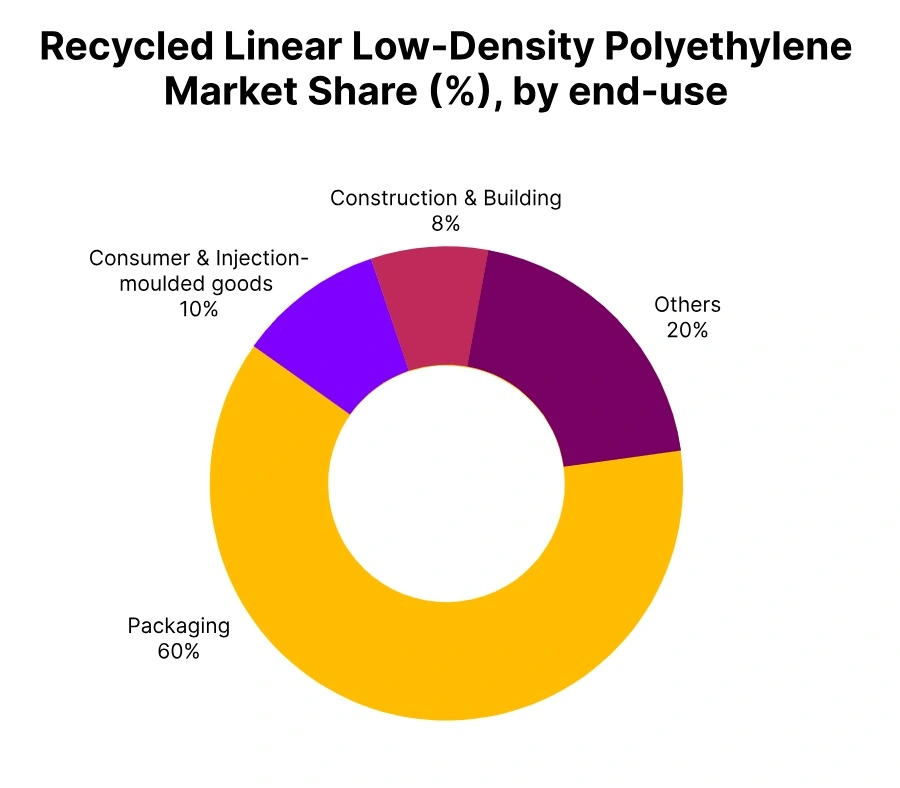Price-Watch’s most active coverage of Recycled Linear Low-Density Polyethylene (R-LLDPE) price assessment:
- Natural Granules Ex-Delhi, India
- Natural Granules FOB Shanghai, China
- Natural Pellets Ex-Jeddah, Saudi Arabia
- Natural Pellets FD Hamburg, Germany
Recycled Linear Low-Density Polyethylene (R-LLDPE) Price Trend Q3 2025
According to Price-Watch, during the third quarter of 2025, R-LLDPE prices exhibited generally stable market trends, typically with price variation limited to between one and two percent (1-2%) across major regions. Various countries in Asia Pacific including India, China and Indonesia showed stable demand from packaging converters and recyclers, along with stable feedstock availability and heightened sustainability initiatives.
The market remained relatively constant due to consistent levels of collection and processing activity, with supply levels also reasonably balanced. In North America, prices continued to show small range of price movement due to variable recycling rates as well as unit demand from the region for post-consumer polymer grades.
Finally, Europe also experienced mild price pressure, albeit with stable demand and adequate quantities of recycled material available. Overall, the R-LLDPE market performance during the quarter was largely strong, and pricing experienced some variation due to improved recycling efficiency, raw material costs and evolving regulatory requirements encouraging the movement towards a circular plastics economy.
India
R-LLDPE Domestically traded prices Ex- Delhi, India, Grade Natural Pellets.
Recycled Linear Low-Density Polyethylene (R-LLDPE) domestically traded prices (Ex-Delhi) in India, showed a positive price trend in Q3 2025, with a 2.6% increase during the quarter. The R-LLDPE price trend in India reflected steady demand from the packaging and film manufacturing sectors, supported by stable feedstock supply and consistent recycling activity. Improved collection rates of post-consumer plastic waste and better processing efficiency contributed to balanced pricing conditions.
However, raw material cost fluctuations and variable regional demand led to some adjustments. In September 2025, recycled LLDPE prices in India recorded a marginal decline of around 0.6% compared to the previous month, mainly due to slower procurement activity and adequate inventory levels among converters. Going forward, the recycled LLDPE price trend may remain stable, with pricing influenced by recycling efficiency and downstream consumption recovery.
Saudi Arabia
R-LLDPE Domestically traded prices Ex-Jeddah, Saudi Arabia, Grade Natural Pellets.
Recycled Linear Low-Density Polyethylene (R-LLDPE) domestically traded prices Ex-Jeddah, Saudi Arabia, show a negative price trend in Q3 2025, with a 0.5% decrease during the quarter. The recycled LLDPE price trend in Saudi Arabia reflects moderate demand from local converters and stable feedstock availability, contributing to the slight quarterly decline.
In September 2025, the recycled LLDPE price trend increases by around 0.3% compared to the previous month, reflecting renewed procurement activity and slight improvements in downstream consumption. Going forward, the recycled LLDPE price trend in Saudi Arabia remains relatively stable, with minor fluctuations driven by supply-demand dynamics and feedstock availability.
China
recycled LLDPE Export prices FOB Shanghai, China, Grade Natural Pellets.
Export prices for Recycled Linear low density polyethylene (R-LLDPE) from Shanghai, China, assessed on a free-on-board (FOB) basis, increased in Q3 2025 by two and six-tenths percent (2.6%) to a price range of USD 740-760/MT. R-LLDPE price trend in China reflected relatively stable demand from overseas buyers coupled with a balanced supply from domestic recyclers, which permitted the quarterly increase.
The prices for R-LLDPE in China have decreased in September 2025, by approximately four-tenths percent (0.4%) from the previous month, due primarily to slower procurement activities and temporary adjustments with international shipping generators. In terms of outlook, the price levels for R-LLDPE remain cautiously stable as price levels are set based on regional demand changes and feedstocks.
Germany
R-LLDPE Domestically traded prices FD Hamburg, Germany, Grade- Natural Pellets.
Recycled Linear Low-Density Polyethylene (R-LLDPE) domestically traded prices FD Hamburg, Germany showed a downward price trend in Q3 2025, with a 1.2% decrease during the quarter. The R-LLDPE price trend in Germany reflects moderate domestic demand combined with adequate availability of recycled material, which contributes to the quarterly decline. Stable feedstock supply and cautious procurement by converters also play a role in limiting price growth.
In September 2025, R-LLDPE prices in Germany increased by around 0.26% compared to the previous month, supported by renewed buying activity, improved downstream consumption, and slightly tighter inventories at distributors. Going forward, the R-LLDPE price trend in Germany remains cautiously stable, with minor fluctuations expected as market participants continue to balance supply and demand while monitoring recycling efficiency and feedstock availability.



